Miele Oven - Intensive Bake + Pizza
Miele Pizza Bakers...I've just completed a search on this topic here because I have a Miele oven which is working fine; love pizza; have drooled at all your pictures. Yet I can not produce a pizza that has a cooked through crust that is not overbaked/burned. I did buy a pizza stone, but don't know:
1) what temp. to preheat oven with stone and for how long
2) whether to place stone on bottom rack or on oven floor
3) what temp to cook pizza on intensive setting
4) How long to bake pizza for
This is one of the many reasons I purchased this particular oven and need to get this right or my DH threatens to put the oven back! Only kidding....
Additionally if you know of dough recipies here, or on the cooking forum that you know work well with this oven, if you could create a link to them that may help too. Right now I'm just grabbing them from cookbooks and magazines.
Thanks everyone as usual.
Comments (42)
sara_the_brit_z6_ct
15 years agoI have a Bosch, but it seems to have the same programmes as the Miele. We just made our first pizzas in it, using a pizza stone. I used Mark Bittman's recipe, from the New York Times. In answer to your questions:
1. I just pre-heated for as long as it took the oven to reach the cooking temperature.
2. You should not place anything on the floor of the oven, because the lower element is hidden underneath. The stone should be on the lowest rack position
3. We cooked it at 450F, because the Bosch 'recipe' programme selected that temperature, when I checked it.
4. Baked it for 20 mins.the recipe I used is in the link.
Here is a link that might be useful: Mark Bittman's pizza dough recipe
User
15 years agoGlad you are exploring the use of the Miele for pizza. DONOT put the stone on the floor of the oven. It could really ruin the surface. On the lowest rack is fine. You should aim for 45 min - 60 min preheat of stone. Also at 500 degrees is best. The pizza should cook beautifully in 6-8 min.
I always slide my crust in and bake it to set it up for 2 min and then remove and top and then return to oven to finish. This a foolproof way of getting the crust all the way done . It also insures that the crust does not get soggy. You need to brush the crust w/o EVOO before this, very lightly. Bake a couple minutes and top. If you limit the toppings and also the sauce is on top not on the crust they result will be crunchier.
There are 100's of crust recipes. If you look on The Fresh Loaf you can do a search for pizza and find a lot of good ideas. Also if you go to Wild Yeast's Blog she is a very very good baker and has a number of great pizza ideas. Hope this helps and please do post more quesitons and pics. Caroline
momotom
Original Author15 years agoTrailrunner, how do you remove the crust after 2 minutes of baking without it mushing together. I assume you bake directly on the stone? Also do you preheat and bake at 500 degrees? You put the cheese on first and then top it with the sauce...am I understanding what you mean here. Thanks,
Pizza Challenged Girltommy275
15 years agoI've been working very hard on creating Neapolitan-style pizza in my Miele. This type of pizza requires very high heat (generally 800 degrees or so). Obviously this is a challenge in a home oven.
You should preheat your stone at least an hour.
Your oven should be at the highest setting possible.
I've just started experimenting with the pizza stone on the top rack, and setting the oven for 550 (preheated for 2 hours). Actually, it's on the second to top rack, but sitting on 3 quarry tiles, to raise it up, but not quite up where it would be if it were on the top rack.
After about 3 minutes with the pizza on the stone, I turn on the maxi-broil to 575 to finish the top of the pizza. My pizze are done in 4 minutes, and sometimes less.
Actually, I've now started using both ovens. I keep the top oven on 575 maxi-broil, with the configuration mentioned above. This gets the stone well over 600 degrees. After 2-3 minutes, I put the pizza in the second oven, which is set to 525, with the same configuration. I then turn on maxi-broil to 575. The reason I keep that second oven at 525 instead of higher is to make sure the broiler kicks on on-demand.
One of the goals of Neapolitan style pizza is a soft, chewy, breadlike texture in the dough. Short cooking times enable you to get these results.
At the very least you have to heat your stone for at least an hour to get it to the temperature that it's capable of getting to. Anything less and you're not using it to its fullest.
User
15 years agoTommy and his power company are BEST friends LOL. I just can't do all of that for a pizza but it sounds great.
Anyway to answer your question. I do preheat at 500 on convection bake . I don't use the broiler although that sure does get the temp up. I also don't use the other settings. I found that this works for the crust I use. I don't care for the thicker chewy crusts. The crust is placed on the hot stone directly using a peel. If you shape the crust and have the counter and the peel well dusted with flour/cornmeal then it won't stick. And the 2 min. is plenty for it not to scrunch up when you move it out again. You will have brushed it well with the olive oil and then when you remove it you can place you toppings and then the sauce ( very small amount) and then the whole milk mozz and the parmasan or whatever you are using.
I sometimes spread pesto on the partially cooked crust and then the sauteed onions and peppers and then the cheese and that is that. "Real" pizza crust comes in all different styles. You really do need to do some of the reading I suggested and then when you are thouroughly confused :) choose one and try it. It is hard, really, to mess it up if you don't put too much stuff on top and if you don't make the crust too thick or thin.
I hope this helps. There are folks that have tried for years to get the :right: one...GOOD LUCK and please do post again ...you can also e-mail me if you like. Caroline
momotom
Original Author15 years agoOh I'm getting so hungry and it's 6:30 am.....this is a dangerous topic for me. Ha Ha. Caroline, you mentioned convection bake....please clarify, do you use CB or Intensive to bake your pizza and if CB why? It helps to learn about this oven. Tommy keep experimenting it's fun to read about, and all the electricity you use probably still comes out cheaper than calling for a pizza delivery!
Thanks again!!!!User
15 years agomoomotom sorry I have been out of town....it is bluegrass festival time :)
I don't use the intensive as it only heats from the bottom. I know it uses the fan but I like CB as it heats from all elements and the fan still circulates. I didn't feel that my pizza browned enough on the top with Intensive. Which is why Tommy is using the broiler. It is making me hungry too. I have some crust in the freezer . I may need to get crackin and make a pizza . c
momotom
Original Author15 years agoI didn't realize that in intensive mode there is no actual heat coming from the convection fan, that it just blows the surrounding air heated from below. Went back to the book and some other documents Miele sent me and you're right. Why do you think they say this is the hottest setting?
User
15 years agoI don't know why they say many of the things they say. The Surround is max heat no convection at 550. The max broil is 575. They are the hottest temps you can get. As far as switching from one setting to another while baking there is some precedent for that if you read some of the threads on The Fresh Loaf. They have a whole forum devoted to pizza. You might want to check it as well as other threads out. Hope this helps. c
rococogurl
15 years agoJust had excellent results with my t & t pizza recipe very straightforward sauce and cheese on raw dough, preheating stone on rack on second runner for 45 mins using surround at 550. Pizzas cooked in 7-8 mins whereas in old oven they took 10-12.
If I need more heat I'd put the stone in the Weber, which can be tweaked up to 600.
I worry about loading up the oven with more than 1 stone and cannot see benefit of the oven getting any hotter than it does in 45 mins which now cooks both the no-knead bread and pizzas to perfection. Of course, everyone has their own methods.
codeloach
15 years agoThe secret is pre-heating the stone and using cornmeal on your paddle to keep the dough from sticking.
Cyberspacer
14 years agoMiele's Intensive mode uses bottom heat and the convection heat as well. It is not just the fan.
doug_gb
14 years agoI've always like the pizza at Lombardi's in NYC. These old (1910 - 1920 era) pizzarias have coal fired ovens - they are really hot (like 800 degrees). They continiously tend the pizzas. A little of the crust will burned.
Use a stone, and a paddle. We have a Smeg oven that goes to 600 degrees. Make the crust thin, not too moist, and go easy with the ingredients on top - so the pizza is not too thick.
rcvt
14 years agoI didn't see mention of this tweak on this particular thread:
Some of us roll out the dough on parchment paper and use the parchment paper to transport the pizza to the peel and then to the stone (or in my case quarry tiles) on the bottom rack.
Sometimes I have to lift the tip of the paper to help the pizza onto or off the peel and/or the stone, but otherwise the transfer is easy and I don't have to clean corn meal pebbles out of the oven. True, the edges of the parchment paper get very brown at these high temps, but the rest of the paper stays strong enough to make transport easy.
Hope this helps someone!
RC
in
VTChristyMcK
10 years agoWe make pizza frequently though not in a Miele. To reiterate comments made that I have found to be true for us in our 1950's electric oven w/broiler. Tommy's comments particularly resonated.
*preheat stone for a solid hour or more
*include broiler and/or get oven as hot as possible
*i put pizza on second to top rack near broiler
*parchment is a godsend for getting the pizza onto the stone (some slide it off after ~2 minutes but I find it doesn't matter) I don't have a pizza peel, just use a cutting board to slide it on/off
*load lightly: light sauce, light cheese minimal toppings will prevent soggy crust
*our pies bake in ~6 minutesI've tried many pizza dough recipe and my favorite these days is Peter Rheinhart's American Pie cookbook's recipe for Neo-Neopolitan pizza dough. It's supple, workable, and yet has a little more structure. I use bread flour (Bob's Redmill or King Arthur) which I think is worth it.
rococogurl
10 years agoI have a Miele oven. I use a pizza stone on the bottom roll-out rack which makes the entire process easier. I preheat for at least 45 minutes and I've recently found I get the best results on plain old Bake. I had been using Intensive and also tried Convection Bake but the regular dumb Bake setting cooks the bottom of the pizza better than the others and cooks it through.
Here's my dough recipe:
Starter:
1/2 tsp dry active yeast
1/3 cup warm water
1/2 cup bread flourDough:
1-1/4 to 1-1/3 cups bread flour
1/3 cup water
3/4 tsp saltI proof the starter in a 1 qt container with tightly fitting lid. When it's spongy I mix it into the rest of the flour and water plus the salt in the food processor and knead it for about 30 seconds.
I rinse out a plastic 1 qt bag and put the dough in there. It gets a refrigerated rise overnight. I scrape it out of the bag, form 2 rounds and refrigerate again for several hours or overnight.
Each circle rolls out well to a 9- to 10-inch pizza. I transfer each to a baker's peel rubbed with rice flour and add the topping. The pizza slides right onto the stone and is done in a few minutes.
So easy. If there's any leftover dough I pull it into out into a flat rectangle, brush it with olive oil and salt and bake it. Sort of a quick ciabatta.
Michael Gregg
8 years agoHi Rococogirl and Everyone,
We also have a Miele oven (two, actually) and I have tried baking pizzas on Intensive (recommended for pizza in the owner's manual) and Surround and maybe one or two others. Crust keeps coming out limp even though I bake on the highest temp for whatever setting after preheating for an hour. The top gets done just fine, it's the crust that needs more crispness. My Miele does not have a 'plain old Bake' setting - wish it did! There is a 'Bottom Heat' setting which the manual says is similar to bake in a conventional oven; is this what you mean, Rococogirl, by 'plain old bake'?
The Miele oven seems to retain a lot of moisture - I suspect that is at least partly why the crust refuses to crisp-up.
Any advice greatly appreciated.
I bake on a Kaiser cookie sheet; am contemplating getting a stone.
I will add that I usually use at least half whole wheat in my crusts, sometimes all whole wheat. I add some extra gluten and generally follow Peter Rheihart's methods: highest temp settings, his neo-Neapolitan recipe with whole wheat plus gluten. I have tried the wet/cold overnight ferment for whole wheat, but usually just start the dough in the morning.
Until we moved a few months ago, I got great results in a standard GE oven set to 550F. Now with a fancy Mieles (which came with our new house), the results are mediocre, at best.
Thanks for any input!
Michael
hvtech42
8 years agolast modified: 8 years agoMichael, I would use the plain bottom heat setting. Or, if there is a setting that gives you mainly heat from the bottom along with a tiny bit of heat from the top, that should do it as well. Those settings would be closest to what you'd get in a traditional bake mode on a regular oven. Also make sure to pick a mode without the convection fan.
If you think about it, to do a pizza right you just need intense heat from below. That's what you would get in a real professional pizza oven, and why pizza comes out so good if you cook it outside on a KamadoJoe or similar. And it's the same reason why you want to put it towards the bottom of the oven. Personally I use a stone but you should be able to get great results from a cookie sheet as well.
I have seen oven manufacturers recommendations (not just Miele) to use modes involving more top heat, or the convection fan, and it's just never made sense to me. It seems that would tend to lead to the toppings getting done before the crust as you're experiencing.
Michael Gregg
8 years agoHi hvtech42,
The first time I made pizza in the Miele, I in fact chose Bottom Heat, for exactly the reasons you mention; I chose it just because it sounded like what I wanted. The results were passable. Then I read the manual, and it recommends 'Intensive' for pizza because it is also bottom heat, plus 'gently circulating' air which is supposed to mimic a brick oven. I have also tried 'Surround' which is conventional baking (no convection) with heat from both the top and bottom elements - that definitely cooked the top too fast. The Miele maximum temperatures are a bit low for pizza (Bottom Heat, or Bake, is only 480, Surround is 510), whereas my old conventional oven went to 550 and meant it! Because Surround goes higher, I have also tried pre-heating on Surround to maximum, then switching to Bottom Heat when I put the pizzas in the oven. Except then the oven is over-hot for its setting and the bottom element stays off pretty much the whole time the pizza is actually in the oven. So next time it's back to plain Bake = Bottom Heat.
I've always had great results on a high quality plain tinned steel cookie sheet in the past. Unless I can figure out how to get similar results in the Miele, I may have to downgrade! Or go for a KamadoJoe, as you suggest, as our friends have something similar and it does do a fine job on the crust.
Cheers,
Michael
rococogurl
8 years agolast modified: 8 years agoYikes, that post was 1-1/2 years old. I just saw it today.
I don't know anything about the dough the poster was using. The recipe I use is above. It improves in flavor if you mix it and leave it in a sealed zip lock overnight.
I completely disagree with the settings Miele recommends. Surround is
completely wrong. I have used Intensive but it also throws more heat
over the top of the pizza than needed at the expense of the bottom where
it's needed.My Miele interface has a Bake Bake choice. I don't know what other models have. If you post and let me know I will try to help.
I think I'm currently baking at 450-475F. My oven goes up to 500 but that's plenty hot with a stone in there. I get wonderful results and the recovery is excellent as well. I've done 3 pizzas in a row with no issues.
I've always used a baking stone on the bottom rack, preheated for at least 45 minutes to 1 hour. Pizza needs bottom heat. I've never liked any homemade pizza baked on a metal pan of any type and would not suggest it.

hvtech42
8 years agolast modified: 8 years agoThe first time I made pizza in the Miele, I in fact chose Bottom Heat, for exactly the reasons you mention; I chose it just because it sounded like what I wanted. The results were passable.
Well, I'm stumped then! I don't see what would be different about the bottom heat mode on a Miele than a conventional bake mode on a different oven. Definitely defer to rococogurl here since she actually owns a Miele oven and appears to have no problem turning out excellent pizzas. What model do you have? I'm curious to see what all the different mode options are.
The Miele maximum temperatures are a bit low for pizza (Bottom Heat, or Bake, is only 480, Surround is 510)
I do think those temperature limits are pretty lame; both my ovens (different, less expensive brands) go to 550 just like your old one. However, the limits shouldn't in themselves prevent you from getting good results; I've baked great pizza with a crisp crust at 475. As rococogurl said, dough makes a difference but if what you're using now worked fine on your previous oven I don't see why it wouldn't now.
Doreen Passariello
8 years agoI have a double Miele oven and cannot make a pizza to save my life! The bottom never browns well. I had a repair man here for a broken element and he suggested that I cook on Master Chef for pizza. He swore that it tasted like a pizzeria! Just made four pies and all the same stuff. I am going to try the pizza stone and heating it for a while. I will try intensive. The stones are so small and I have a large family. I wish I could get one the size of the oven. I used metal pans, and once again a soft pizza! I am very disappointed.
rococogurl
8 years agolast modified: 8 years agoWhat do you mean by "the stones are so small?"
How is the pizza being transferred into the oven?
What setting is being used and what temperature?
As mentioned in my post with the photo @9/10/15- 1:19 a metal pan for a full size pie is not likely to have a good browning result on the bottom -- especially if the crust is thick or there is a large amount of topping weighing it down.
Pizza needs to be cooked on the hot baking stone.gigelus2k13
8 years ago@dorpas12: instead of a pizza stone you could use half-bricks from the local home improvement store (HD etc). You can carpet a full rack with them, although I think that you should leave some room around the improvised "hearth" for airflow. Or you could buy a set of "Dough-Joe" soap-stone bricks.
Pizza stones are usually expensive, small and thin, bricks are cheaper and better (IMHO).
wekick
8 years agoI would not want to use anything that is not food safe like tiles from the hardware store.
I would consider using a baking steel.
rococogurl
8 years agolast modified: 8 years agoI definitely would not line the rack of an electric oven with bricks. And ditto wekick -- who knows what's in non food safe materials? Yikes.
My oven stone is 15" x 16" -- certainly big enough for a 13-inch pizza. The pizza needs to be moved onto the stone from a peel (paddle) and that takes experience and technique since the dough gets heavy and can stick fairly easily.
gigelus2k13
8 years agolast modified: 8 years agohmmm, we're talking about lumps of clay mixed with sand and lime, fired in kilns where they reach high-enough temperatures to achieve vitrification (1800-2100*F), much, much higher than any residential oven would ever be capable of. It's normal to be vigilant about food-safe issues, but fretting about fired bricks is akin to worry about the lead content in crystal glass.
BTW, the Dough-Joe "food-safe" bricks are 9"x6"x1" and come in sets of 5 (one set can cover an area of 12"x15").
Michael Gregg
8 years agoTo be safe, I would worry about the glaze and lead content of floor tiles from home improvement stores too. Rather than tiling a rack with small bits, there are companies that will custom cut/make a pizza stone to fit your oven space. Just look on amazon. I am considering getting one for my Miele - one could in principle use it instead of one of the oven racks, but I think it might be better to get one that fits on top of a rack, then there is no worry about cracking/breaking catastrophes.
Still leaves the transfer-from-peel problem to deal with, but that is clearly a learnable skill.
rococogurl
8 years agoMiele ovens have roll out racks. My pizza stone pretty much fills that rack. No advantage to have it slide in on its own. Its safer supported on the rack.
People do all kinds of wacky things in the kitchen and swear by them. Anyone who wants to use bricks from the home improvement store has my best wishes -- as long as I don't have to eat that pizza.Pizza needs to slide onto the stone to some degree. Otherwise, forget the stone and just use a pan.
barryv_gw
8 years agolast modified: 8 years agoAnother option is i baking steel. It will transmit more heat to the bottom of your pie than a baking stone, and it can't break like some of the cheaper baking stones. It can be pretty heavy, and fairly pricey if you buy commercially, but you can also use scrap steel, once you clean it, it works well. http://www.pizzamaking.com/forum/index.php?topic=31267.0 a number of companies now sell steels - though the thickness and price vary greatly - http://www.bakingsteel.com/ 18 by 14 by 3/8 $200 Doug Joe has various thicknesses http://www.amazon.com/Dough-Joe%C2%AE-Baking-Sheet---Emperor-trade/dp/B00LBKWSGW/ref=sr_1_6?ie=UTF8&qid=1446466566&sr=8-6&keywords=the+baking+steel
ifoco
8 years agoWhen I'm not in the kitchen, I'm a potter. First of all to worry about quarry tiles and their safety is needless worrying. Quarry ttiles are first of all not glazed and are safe. Quarry tiles are made from clay and water fired in a kiln I think somewhere between 1650 and 1900 degrees F, more towards the lower end. as I recall If you baked your pizza on glazed tiles, it would not matter either.
Glaze leaching occurs with moist items in the right environment. Example, you drink your orange juice out of a cup that has a low fire, poorly formulated lead glaze. Orange juice is acidic and will leach things out of a poorly formulated glaze. Eventually, you will suffer from lead poisioning. In reality, most of us do not use lead glazes since breathing the lead dust is much more serious and harmful to the potter than selling you a cup glazed with lead. Besides, if you die of lead poisoning, we loose a customer ::)) I have a lovely large platter I purfchased in Spain many years ago. I can tell it is low fired and suspect lead glazed. I would never serve anything moist on that platter. I have however, used it as a fruit bowl ever since I purchased it without harm to anyone.
So, back to pizza and stones. I have many kiln shelves on hand that are rated to 2400 F +, I cut a kiln shelf to fit my oven rack. They are way more durable than any pizza stone you can purchase on the market. I heat it up at least 45 minutes. Put the rack up towards the upper end of the oven. It turns out great crust and good pizza. When cheese or something else falls onto the kiln shelf making a mess, I flip it over and use the other side. When both sides are messy, it's time to leave it in the self clean cycle. Violla, clean stone ready for more pizza. Kiln shelves should never be washed or if you do wash them they need to be totally dry or will fail in the oven or the kiln.
Inga
wekick
8 years agoI guess it depends on what's in the clay and where it came from. Since there are products labeled food safe, I would go with those rather than save a few bucks.
ifoco
8 years agoHi wekick,
you obviously didn't really read or understand what I said. There are many things one could worry about. Throwing some dough on clay tiles in your oven is not one of them. You are not eating the tiles or at least I hope not. :))
best wishes
Inga
docsknotinn2day
8 years agoIt's not like a Pizza stone is terribly expensive. I think I paid $40 for a BGE stone ten years ago and it still looks like new. The Pampered Chef used to have good Pizza stones as well.
gigelus2k13
8 years agoPizza stones are usually thin, hence their thermal mass is lower than alternatives.
wekick
8 years agoi read exactly what you said and have perfect, crystal clear understanding of your position. With all due respect to your background as a potter, my background is in chemistry and I am a health care professional. I have a different opinion than you do. :-) I have had a couple of good friends who worked in the ceramic arts and both died at an early age from exposure to toxins related to their art, not that long ago, so maybe things are not as cut and dried as you might think. I know quite a few people in very precarious health due to things they inhaled unknowingly.
You really have no idea what is in the clay used in making those tiles. There is clay but what other contaminants are in the clay and what does heat do to them. You might also have contaminants such as bug sprays applied after the manufacturing process. If these tiles are made in another country the sprays might not even be legal here. It is not like tiles are the only thing you can cook on. For me it is a no brainer but everyone can decide for themselves.
ifoco
8 years agoweckick,
I suspect you are way more educated and knowledgeable than I am and I agree everyone should decide for themselves. All of the pizza stones I would guess are MADE IN CHINA. one execption is Emile Henry which I actually bought thinking it was the cats meau. It was not anything close to what they claimed it to be. Huge disappointment. It is made in France which I suspect is better than made in China, or I like to think. All Mfg have proprietary information as to what really is in their product. Ultimately we the consumer don't really know. As for your friends who have succumed to various ailments, I am sorry. I am one of the ones who thought I was invincible...arent we all when we are young? I have inhaled clay dust and many other chemicals working in the studio just being careless. Clay dust in itself is not horrible but in large quantities causes silicosis.
After all of that pizza discussion I really got hungry for pizza and thought I really need to make some pizza. The best stone I find is still my kliln shelf.
Peace to you and happy pizza making.
Ingawekick
8 years agoInfoco,
I only mentioned my background because of your statement "you obviously didn't really read or understand what I said."
I agree with much of what you are saying and try to avoid anything made in China.
Our pizza making lately is using a cauliflower crust instead of bread because we are watching our carbs. :-(.
ifoco
8 years agowekick,
good luck with watching carbs ....I am trying that as well but not havinfg much luck and caulifour is not one of my favorite crucifers :)) best wishes
Ingarococogurl
8 years agoI have an Old Stone Oven baking stone, 14" x 16". It is made of firebrick in the USA. It fits easily on the oven rack, costs less than $50 on Amazon, it's half an inch thick and does an excellent job for pizzas, artisanal breads and pastries. Solves a problem vs creating one.
stevep2005
8 years agoI've worked my way up to baking four pizzas at a time over the last twenty years. So in my dual 30" convection Therms I have three mismatched 14" x 16" pizza stones from different manufacturers, all fairly thick but not the same, and my fourth most recent purchase was the same size baking steel to try that out for comparison. And for the most part, they all pretty much do the same great job with slight time variants that you can account for with your eyeballs.
My first eighteen or so years I was all about the corn meal for moving the pizzas off of the peels and onto the stones. Then I bought one of the aluminum peels and the cornmeal flat out didn't work - the dough stuck no matter how much corn meal I used. And you know - corn meal on the 500 degree stone eventually talks to your smoke detectors.
Out of necessity I tried parchment instead - and it works brilliantly! I've completely switched after all these years. Allows me to pre-prep four pizzas on parchment, (there is no risk of sticking to the peel while making the others), the pizza cooks right on the stone through the parchment, and after four or five minutes I'll slide the aluminum peel under each and slip out the parchment to extra crisp the crust. I keep the parchment aside and use that under each pizza when I slice it to absorb dripping/steam and keep the crust crisp.
I preheat the oven and stones to 500 or 525 for at least 30 minutes before the first batch, and my pizza is super thin crust, about 6-8 minutes baking.
Oh, and the parchment also works to get pizza and flat bread transferred over and started on the grill - directly on the grates. That stuff is magic, not just for cookies.
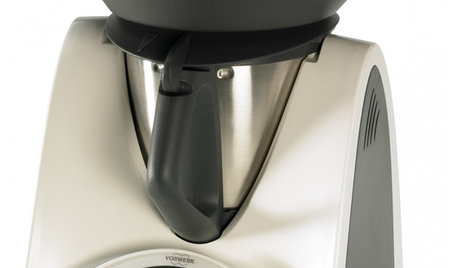

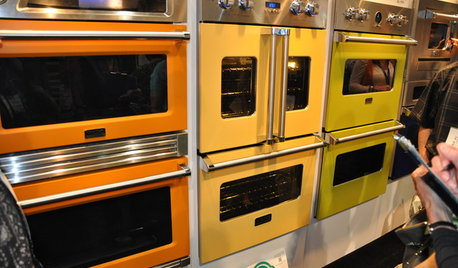
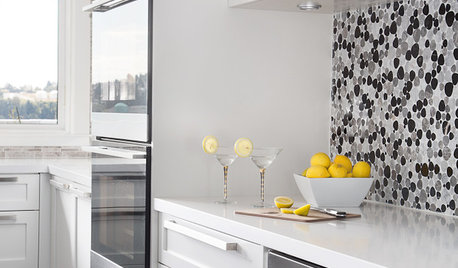

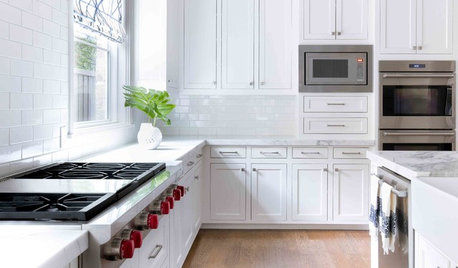
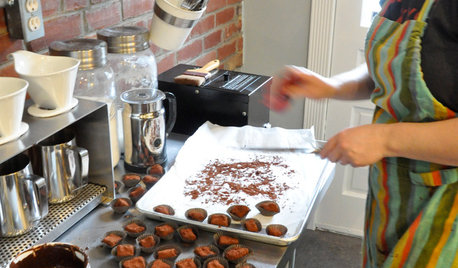
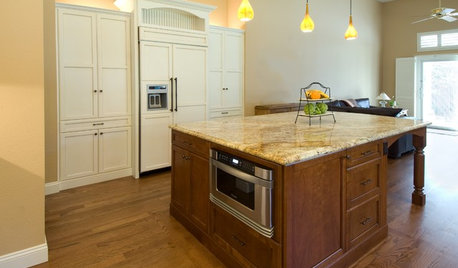

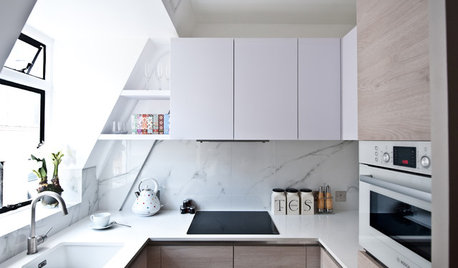






margoke